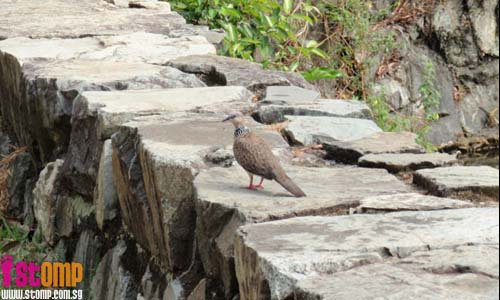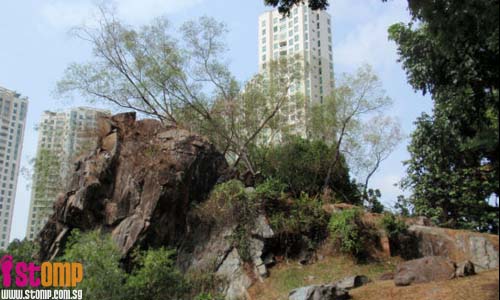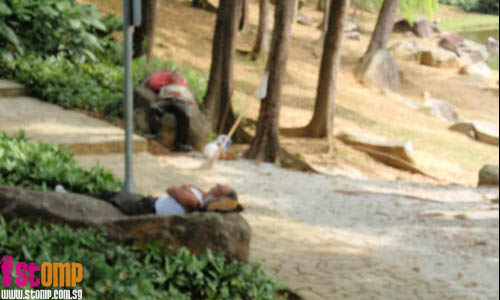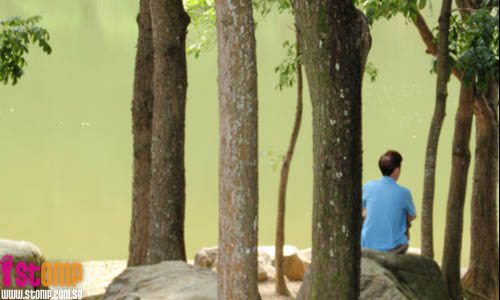
A STOMPer shares his fondness for Little Guilin, with all of its myriad sights and sounds. Like all public places in this urban jungle, the park can be at once both beautiful and ugly.
In an email yesterday (Feb 3), the STOMPer wrote:
"Little Guilin is the only 'green lung' for the residents of the HDB flats and private condos at Bukit Batok East Avenue 5.
"The beauty of Little Guilin is reminiscent of that of its namesake in China.
"Some came to exercise their body, some came to fish and some came to create a mess for the cleaners employed by NParks.
"For those who love nature, Little Guilin has both wind and water and that is why the 'feng shui' here is superior to that of other parks.
"On weekends there are hordes of brides, bridegrooms and photographers who make a beeline for this lovely park. No wonder they say that marriages are made in Little Guilin and not in heaven.
"Photo 1: A spotted dove (Streptopelia chinensis) searching for food early in the morning.
"Photo 2: The rocks and trees of Little Guilin. Private condos can be seen in the background.
"Photo 3: Two old men sleeping in the park. One was using his boots as pillows.
"Photo 4: A man sitting on a rock. He was watching the anglers who came here to fish.
"Photo 5: A broken bottle left behind by some foreign workers."




Not much to say about this post, since I am very busy today, but it does go to show how the thoughtless actions of some park visitors can thoroughly spoil the beautiful surroundings.
The nearby Bukit Batok Nature Park is home to some Malayan colugo (Galeopterus variegatus), as shown in this older post in STOMP, and is also one of the remaining strongholds of the straw-headed bulbul (Pycnonotus zeylanicus) in mainland Singapore. A small population of the endemic Singapore freshwater crab (Johora singaporensis) has also been recorded to live in the park, although it is likely that this critically endangered species has vanished from this site.